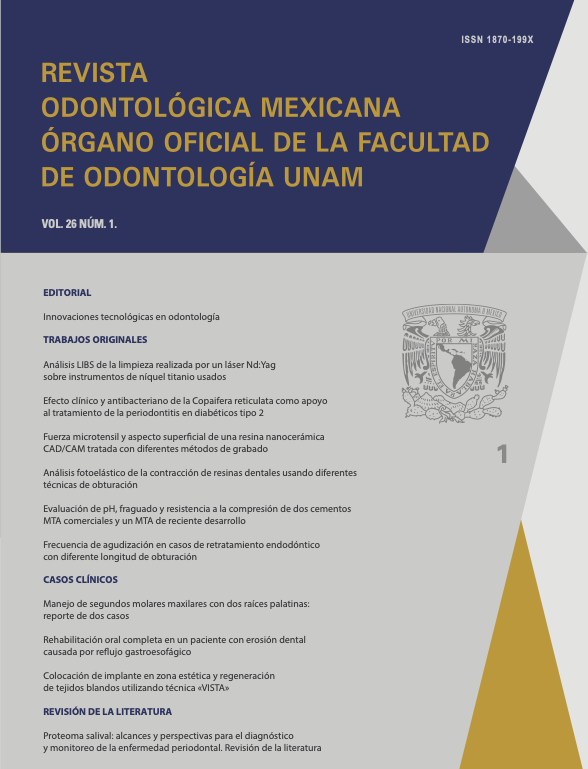Implant placement in aesthetic zone and guide tissue regeneration using ''vista'' technique
Main Article Content
Abstract
Introduction: dental implants are an alternative treatment for prosthetic fixation in situations of partial or total edentulism. The most important requirements for dental implant placement are the quantity and quality of bone and soft tissues at the recipient site. The VISTA technique (vestibular incision subperiosteal tunnel access) allows a volume increase in a horizontal direction from the regeneration of hard and soft tissues. Objective: to present the treatment of an implant-supported restoration in the region of tooth 21, in which bone and connective tissue grafts were performed to increase the horizontal volume of the ridge using the VISTA technique. Case report: 42-year-old male patient; reason for consultation was: "I have lost a tooth"; upon intraoral examination, the absence of tooth 21 was observed. An implant (Straumann, SLActive, ø 3.3, length 12 mm) was placed. Bone (bovine xenograft (NuOss) and connective tissue grafting (resorbable collagen membrane (RCM6) were performed in the vestibular region using the VISTA technique to increase the horizontal volume of the residual ridge. The crown was made using a zirconia-based Variobase abutment with layered vestibular porcelain. An increase of the horizontal ridge (2 mm), stability of the hard and soft supporting tissues around the implant, and an esthetic, biological, and functionally adequate restoration were achieved. Conclusion: the VISTA technique is a promising approach for the treatment of implant sites with insufficient hard and soft tissues for full coverage of the implant surface.
Article Details
Citas en Dimensions Service

Revista Odontológica Mexicana por Universidad Nacional Autónoma de México se distribuye bajo una Licencia Creative Commons Atribución-NoComercial-SinDerivar 4.0 Internacional.
Basada en una obra en http://revistas.unam.mx/index.php/rom.


